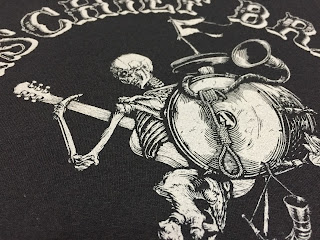Mt. Hood National Forest, OR.
May 31, 2015
With my legs still sore from a couple hikes with 1,000' elevation gains within a mile or so I have no idea why I decided to do the Bald Butte hike.
Maybe because it was short? It's less than a mile to an elevation of around 7,500'.
Maybe cause the drive's last half mile is on a high clearance road? I always like driving dirt roads. Basically you follow the power-lines up the butte and park under them when the road ends.
Maybe for the wildflowers? This time of year the hike's perpetual view of Mt Hood from up-close is continually accented with blue Lupine, red Paintbrush and yellow Balsamroot. The beauty of a Dog Mountain hike for way less effort, no day-use fees and most importantly no crowds.
 |
| My cellphone repeatedly hates to focus on wildflowers. |
At the start of the hike the power-lines are right above you with Mt Hood in the background. There were a group of turkey vultures circling nearby further up so I hiked off-trail towards them. When I got closer and with the steepness of the hill they were sometimes soaring only 30 ft above me.
 |
| Looking south back down at part of the steep hike up. You can not tell from this cellphone picture but the hillside is covered in wildflowers. |
There was a great payoff for such a short hike. At the top in a single spot you can see the Cascade Range from Mt St. Helens to Mt Adams to Mt Rainier to Mt Hood.
 |
| Mt St. Helens from atop Bald Butte. |
The trail continues around the butte but offers no more special views. There also were some trails that went down through the woods that I did not venture too far into. Instead, I ate some snacks on the hillside and headed back to my truck.
 |
| Cake the Truck at the end of the road. There is a mountain bike trail that starts here as well. |



































